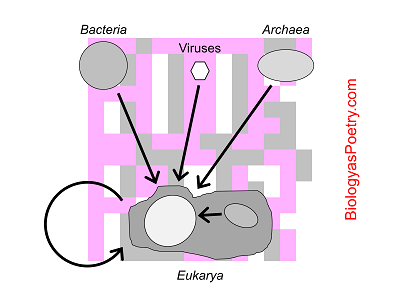Acquisition especially by eukaryotic cells of DNA associated with prey organisms that they have engulfed.
When an organism engulfs another organism, that is, via phagocytosis, those prey organisms find their way into vesicles known as phagosomes. Phagosomes, a.k.a., food vacuoles, fuse with lysosomes, creating phagolysosomes. Prior to digestion of the DNA found within these vesicles, if an accident should happen that results in contents leakage into the cytoplpasm, then that will now be found in the engulfing eukaryote's cytoplasm.
When an endosymbiont such as a mitochondrion or similarly breaks then its contents, including its DNA, also find their way into the host cell's cytoplasm. Once DNA is found free in the cytoplasm it has some potential find its way into the cell nucleus, and once DNA is found in the cell nucleus it has some potential to integrate into . Once integrated into chromosomal DNA then there is high potential, particularly for single-celled organisms, for that DNA to be passed on to offspring.
Integrated foreign DNA may not be expressed, and that particularly would be the case for DNA of bacterial origin that finds its way into a nuclear genome. Duplication of gene expression control sequences, and accidental movement to within the vicinity of so-acquired DNA, however, can lead to expression of that DNA, which can then potentially positively impact the fitness of the eukaryotic organism.

You are what you eat represents a plausible means by which especially single-celled eukaryotes may acquire bacterial and archaeal as well as that from phagocytosable eukaryotic prey organisms.
The following is a brief introduction to :
See also the more general idea of "You are what you eat, what you live on, what lives on you, and what lives in you."